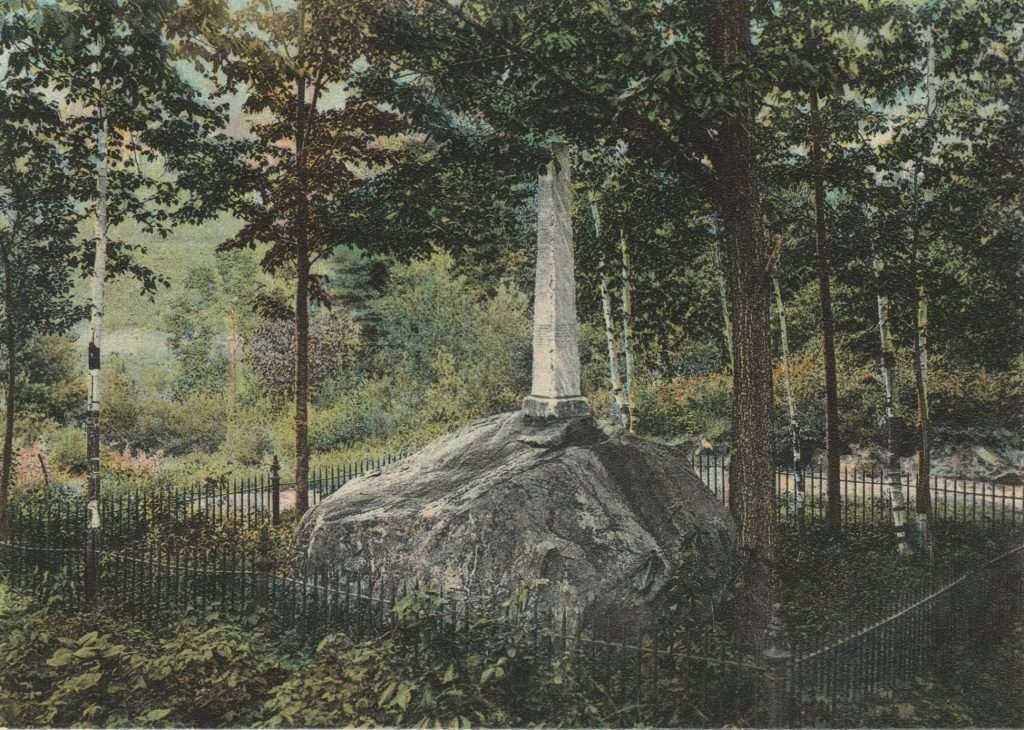
 It was July 12, 1886, and the Glens Falls Post-Star newspaper published a story entitled “Stop the Vandals.” Relic hunters were destroying the Ephraim Williams Monument obelisk, located off Route 9 four miles south of Lake George, breaking off pieces from the corners of the once “handsome monument.”
It was July 12, 1886, and the Glens Falls Post-Star newspaper published a story entitled “Stop the Vandals.” Relic hunters were destroying the Ephraim Williams Monument obelisk, located off Route 9 four miles south of Lake George, breaking off pieces from the corners of the once “handsome monument.”
The white-marble monolith was erected in 1854, the year before the centennial of the death of Colonel Ephraim Williams, Jr., a provincial (colonial) officer in the British military. Williams was killed on September 8, 1755 during an ambush by French and Canadian troops and their Native American allies. Williams’ death was during Bloody Morning Scout; the name historians have given to the first skirmish of the Battle of Lake George.
The 1854-erected monument was funded by Williams College in western Massachusetts. The prestigious-educational institution was established in 1793 with money from Ephraim Williams’ estate.
The obelisk was erected atop a boulder that marked the location where Colonel Williams fell in combat. An iron fence was also built around the monument to protect the stone pillar from souvenir collectors.
The Battle of Lake George (September 8, 1755) was significant in the French & Indian War (1755–1763). It was one of the few British victories early on in this global conflict; known as the Seven Years’ War (1756–1763) in Europe.
The defacement of the famed monument in 1886 sparked a public outcry to protect historic locales around Lake George. Historic preservationists called for a law to prohibit the desecration of noteworthy cultural property.
Unfortunately, at that time no effective action was taken to curtail vandalism to iconic sites. Over a year later in August 1887, the signage board on the plank road (the paved highway was not yet built) that directed tourists to the monument was ripped down by mischief-makers.
Furthermore, by 1887, a wooden sign that marked another colonial battlefield needed a fresh coat of paint. That marker, ravaged by time, identified what was believed to be Bloody Pond, also a military conflict site during the day-long Battle of Lake George (September 8, 1755).
It took decades, but finally on September 8, 2005 a replacement for the Williams Monument, a replica of the 1854 obelisk, was dedicated.
Other improvements were likewise completed at that time. These included interpretive signage at the memorial and along route 9 adjacent to the monument, a parking area to facilitate accessing the grounds, a new fence around the marble column and boulder, and a paved footpath.
These enhancements marked the 250th anniversary of the Battle of Lake George (1755–2005). The renovations were paid for by a Williams College group. The Warren County Historical Society helped organize the September 8, 2005 ceremony. The event’s keynote address was given by Robert Flacke Sr. of the Fort William Henry Corporation.
If you have not paid a visit to the restored Williams Monument, it’s well worth a trip.
Read more about the Battle of Lake George.
A version of this article first appeared on the Lake George Mirror, America’s oldest resort paper, covering Lake George and its surrounding environs. You can subscribe to the Mirror HERE.
Illustration: An old postcard of the Ephraim Williams Monument on Route 9 four miles south of the head of Lake George (Joseph W. Zarzynski Collection).

